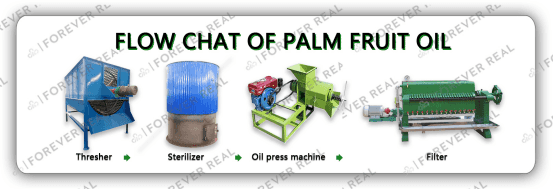
Palm oil is a tropical woody vegetable oil. It is currently the vegetable oil variety with the largest production, consumption and international trade in the world. It is also called "the world's three major vegetable oils" together with soybean oil and rapeseed oil. It has more than 5,000 years of experience. food history.
The unit is fresh palm fruit bunches, the total amount of palm fruit bunches is 100%, the proportion of empty fruit bunches (23%), palm fruit 65%), and the proportion of palm oil content in the whole palm fruit bunches (26%) palm nuts Oil content (3.25%).
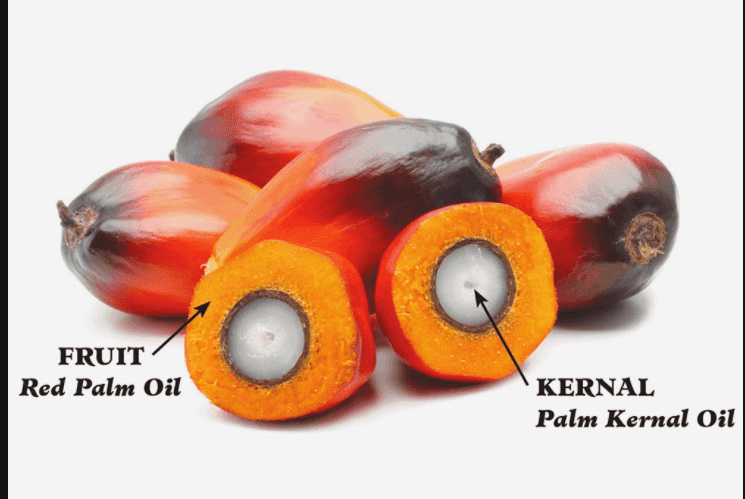
Processing Equipment for Crude Palm Oil
The traditional process uses steam fermentation, which is a mature technology. The disadvantage is that it produces a large amount of wastewater, which has a considerable impact on the environment.
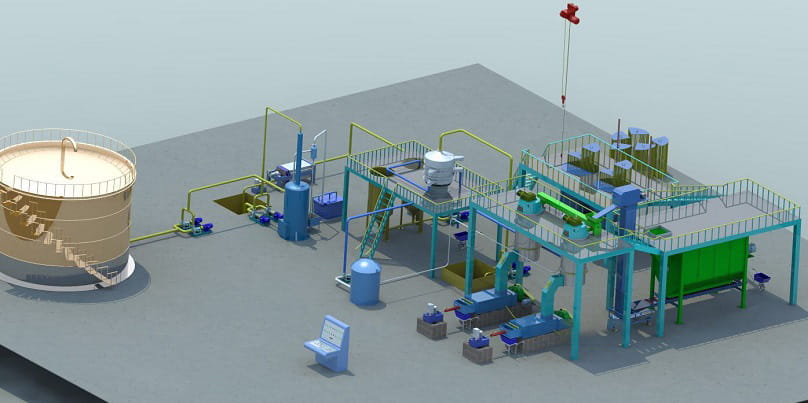
Raw material storage section: The fresh palm fruit is measured and recorded by the weighing room, and the measured palm fruit bunch is unloaded to the fruit loading slope and stored.
Sterilization section: Put the palm fruit bunches into a horizontal or vertical sterilizer and heat for 90-120 minutes.
The purpose of sterilization is: to destroy lipase, so as to avoid the increase of free fatty acid content in the oil; high temperature sterilization can make the fruit soft and convenient for mechanical threshing; pre-treat the peel to prepare for subsequent processing; pre-condition the core to reduce the damage of the kernel .
Threshing section: The purpose of threshing is to separate the oil palm fruit from the fruit string through strong vibration. The fruit threshing equipment is a drum thresher.
Mashing and cooking: The purpose of mashing and cooking is to tear the skin of the fruit, separate the pulp from the core and mash the pulp tissue, while heating to make the pulp soft and destroy the pulp cell structure, which is conducive to the precipitation of oil from the pulp tissue .
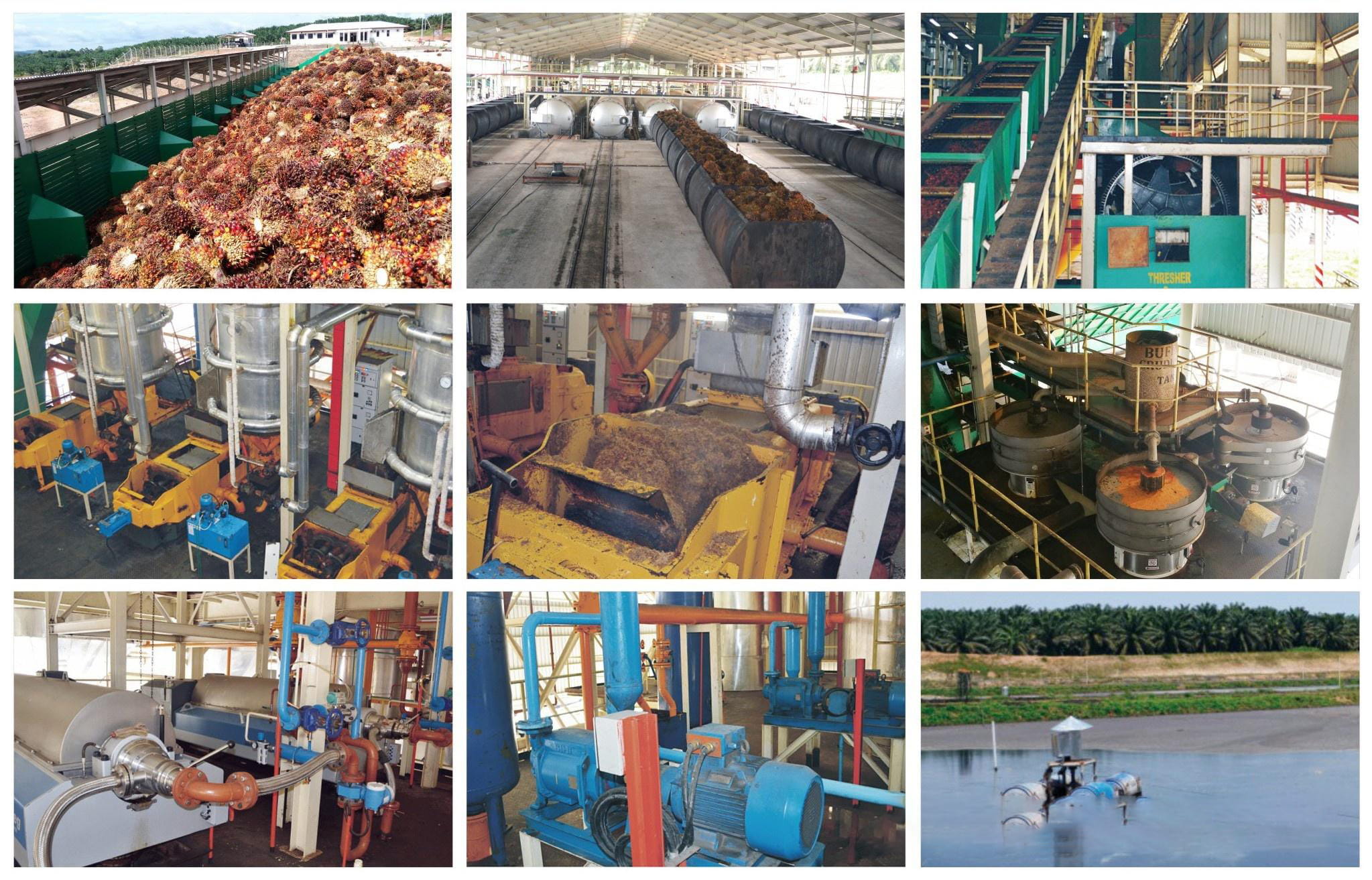
Pressing section: After the above steps, the palm fruit is sent to the screw oil press, and the oil palm fruit is divided into: oil, water, a mixture of solid impurities and cake (fiber and core).
A continuous screw press is used. Under the action of the screw pressure, the fat is separated from the pulp tissue. The fried cake is extruded from the machine head, containing the core (without breaking the palm kernel oil), and the liquid part flows out from the lower port, and is filtered and sent to the butterfly centrifuge, crude palm oil is obtained. The oil palm fruit is divided into two parts after pressing: the mixture of oil, water and solid impurities; the oil yield of fiber and kernel is calculated according to the fresh fruit string of palm, 20% of crude palm oil and 2% of crude palm kernel oil.
Parameters of obtained crude palm oil: orange-red color, semi-liquid oil, surface density (50°C): 0.8896-0.8910, saponification value: (mgkoh/g oil) 190-202, iodine value (gz2/100g).
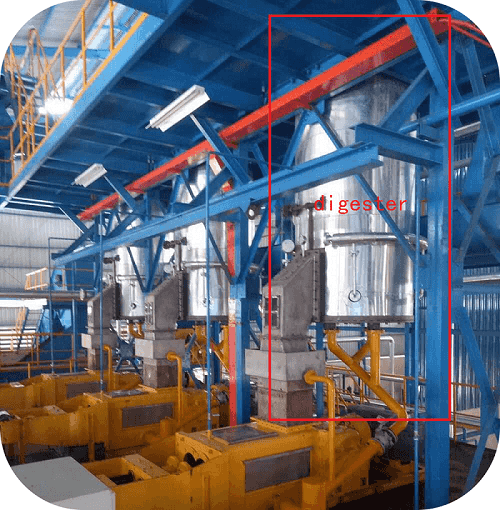
Crude oil purification section: This step is to obtain relatively pure palm crude oil.
Crude oil generally contains 66% oil, 24% water, and 10% non-oil solids. The machine-pressed crude oil is first washed by sedimentation and filtration, and the fibers are separated from the oil. Continuous precipitation clarification is then carried out, and oil and sediment can be obtained. The oil separated by the centrifuge enters the vacuum drying. Store after drying. The sediment is subjected to secondary clarification treatment. After the oil sediment is filtered and the dirty oil is separated, the oil is subjected to secondary sedimentation, the dirty oil mixture is clarified and separated, the skimmed oil is subjected to secondary sedimentation, and the sewage is pumped into the sewage treatment tank for treatment.
The second processing method: the crude palm oil is passed through a vibrating screening filter to remove coarse residues such as fibers and then flows into the tonized oil tank. There are indirect steam and direct steam in the tonized oil tank. tank, flowing steadily into the clarified oil tank.
The basic standards of crude palm oil entering the storage tank: the acid value is less than 5%, the moisture content is between 0.1% and 0.2%, and the impurities should be less than 0.02%.
Fiber and core separation section: After the pressed cake is crushed by the screw conveyor, it enters the winnowing separation system. The separated fibers are sent to the boiler room as fuel. The cores are transported to the warehouse for temporary storage.
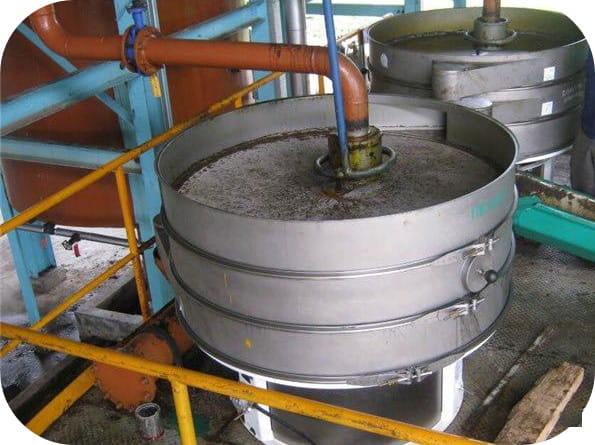
Nucleus recovery section: Nuclei must be softened and tempered before crushing, and the softened nuclei are broken into two or more lobes by a corrugated crusher, and the kernels are released.
Sewage treatment section: The content of organic matter in wastewater is very high, and the biochemical oxygen consumption BOD is about 25000ppm, which needs to be treated before it can be discharged. Reservoir sewage treatment system is currently the most widely used and effective treatment method. This kind of processing system is economical, and only needs to provide enough space, and the investment cost is not large.
Storage of crude oil: During storage, after the vacuum drying section of the factory, the temperature of the oil is lowered to 45-50°C before entering the storage tank. After the oil is put into the tank, keep the temperature at a constant temperature of 55 degrees. You can also add some antioxidants to the oil to passivate trace metals to eliminate oxidation during the storage of oil.
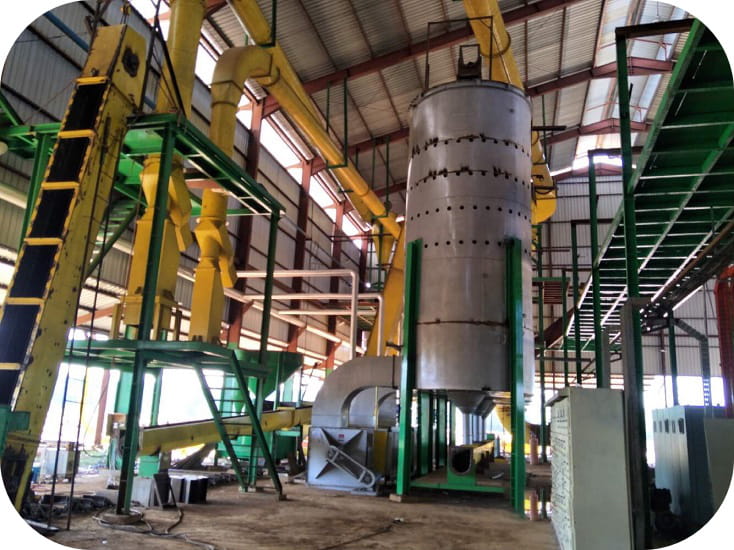
Main equipment
1.Sterilizing
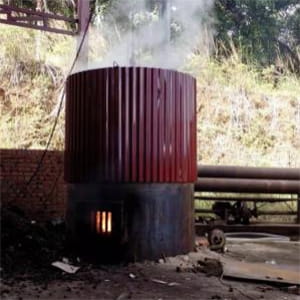
|
Name
|
Specification
|
|
Sterilizing
|
Model:SJG1.0
Volume: 1.0CBM
Size 1200*1200*2200mm
Weight: 380kgs
Material: carbon steel
|
Uses:
Sterilizing section: adopt boiled water for boiling the FFB ,which loosen the contacts between fruit and bunch .
Fresh palm fruit bunch are sterilized in sterilizer with water vessel. The purpose to prevent enzymes broken down, avoiding FFA content in oil further increase; pretreatment peel, prepared for the follow-up processing; pre-conditioning stone, reducing the damage kernel.
2.Threshing
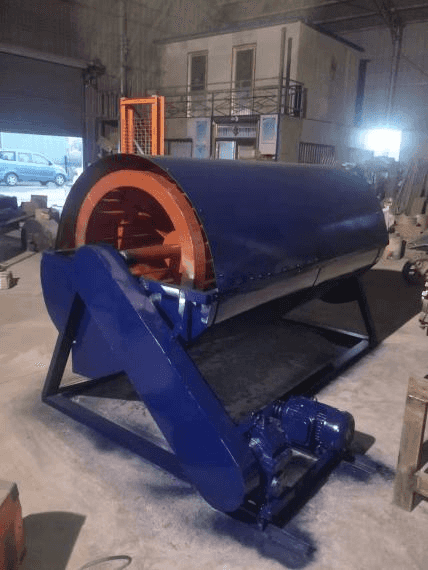
|
Name
|
Specification
|
|
GT-1000
|
Thresher 1ton per hour,
motor 4kw
Size:1900*1400*1600mm
weight:500kg
|
Feature :
The purpose of threshing is the oil palm fruit be separated from the fruit bunch through strong vibration, Threshing equipment is revolving drum thresher. The oil palm fruit separated be ejected then into the press section. Empty fruit bunch be ejected to the yard from the other side of the revolving drum, or shipped out from the plant as palm orchards slipcover to recycling use, or burning in the locale as fertilizer for.
3.Digesting
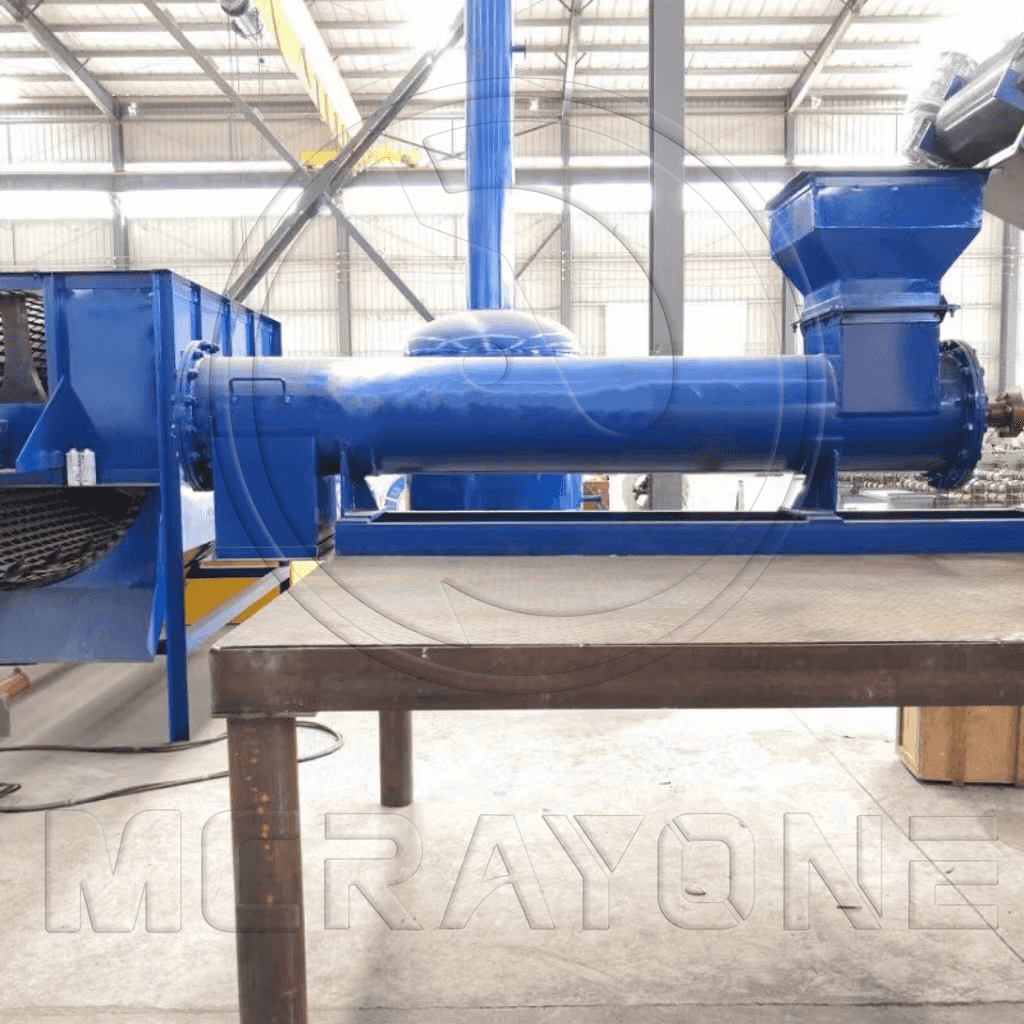
|
Name
|
Specification
|
|
Digesting
|
Size: 2000*600*800MM
motor power: 4kw
weight: about 300kg
material carbon steel
|
Feature :
It is used to crush palm fruit to increase oil yield and transmission, generally not recommended to buy if the output is not very large
4.Pressing machine
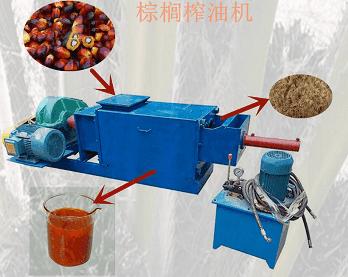
|
Name
|
Specification
|
|
Oil Press
|
capacity:1-2t/h
power:5.5kw
size:1800*850*650mm
|
Feature :
Palm fruit enter into continuous screw press for pressing. Oil palm fruit pressed is divided into two parts: oil, water, solid impurities mixture and the press cake (fiber and nuclear). Oil, water, solid impurities mixture by the crude oil gutter inflow to oil purification section; press cake by breaking screw conveyor into the fiber- recovery section.
The process adopts the special screw oil press ,so the palm nut is out with the dregs without damaging .
5.Oil filter
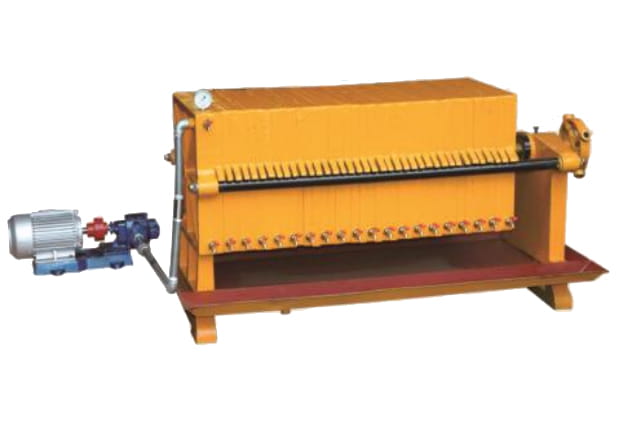
|
Name
|
Specification
|
|
YLB470
|
Filter Area: 7m2
Capacity: 450 kg/h
Plate Size: 470*470mm
Plate Quantity: 18 pcs
Power: 1.5 kw-4P
Size: 1650*700*780mm
Weight: 1040 kg
|
Feature :
1.Mainly used for filtering series kinds of plant crude oil, such as peanut\ sesames\ rape-seeds\ sunflowers\ coconut oil, etc.
2.Capacity customized from customer's request, suitable for different scales of oil refinery and oil factory.
3.Equipped with gear pump which convey the oil to the filtratrition rooms, saving labor and has higher efficiency.
4.The filtrating force is big, thus can achieve precise result.
5.Light weight, convenient operation, matched with oil pump and motor.
